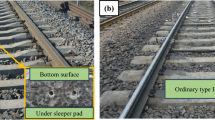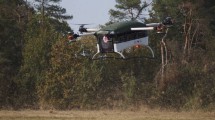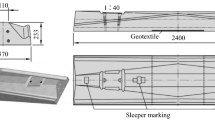Abstract
Based on data from statistical accident analysis, buses and coaches are still one of the safest means of transportation. Nevertheless numerous occupants get injured or suffer fatal injuries due to accidents. Although a high proportion of seriously injured casualties happen in accidents where the bus overturns or leaves the road, a large number of injuries are caused due to a normal collision, like a head-on or rear end impact. ECE regulation 80, referring to the strength of seats and their anchorages, was the initial starting point for this investigation. This regulation is limited to seat testing for frontal collisions, while this study deals with the results of testing in the opposite direction. Numerous coaches, especially double decker coaches, also have rearward facing seats and have consequently a different kind of loading to the seat structure. Summarizing, the results of the sled tests show a potential for further improvements in the energy absorption and design of the coach seat structure, to minimise the injury risk in such an accident configuration.
Similar content being viewed by others
References
ECBOS Consortium, Task 1.1 report “Statistical Collection”, EC funded project: ECBOS – Enhanced Coach and Bus Occupant Safety, 2001.
ECE Regulation 80: Provision concerning the Approval of Seats of Large Passenger Vehicles and of these Vehicles with regard to the Strength of the Seats and their Anchorages, 01/1999.
ECE, Economic Commission for Europe.
Traffic Safety Facts 1998, NHTSA, U.S. Department of Transportation.
15 member states of the European Union (2001).
Hofinger, M. Development of an Active Sled Test Facility, Diploma thesis at the Institute for Mechanics at the University of Technology Graz-Austria, 1998.
TRID-neck: TNO rear impact dummy neck, Detailed description: 1996 ESV paper (No 96-S10-O-12).
SAE J211: Instrumentation for Impact Test – Part 1 – Electronic Instrumentation. 03/1995.
Proposal for the ISO/TC22 N2071 (Collision Test Procedures). 02/2000.
Bolte, K. Simulations of Large School Bus Crashes, SAE Technical Paper Series, No. 2000–01–0469, 2000.
Crashworthiness Testing of Amtrak's Traditional Coach Seat, Safety of High-Speed Ground Transportation Systems, U.S. Department of Transportation, Final Report 10/1996.
Rights and permissions
About this article
Cite this article
Mayrhofer, E., Geigl, B.C. & Steffan, H. Evaluation of the effectiveness of a bus and coach seat during rear end impact by means of sled tests. International Journal of Crashworthiness 8, 255–267 (2003). https://doi.org/10.1533/ijcr.2003.0233
Issue Date:
DOI: https://doi.org/10.1533/ijcr.2003.0233




